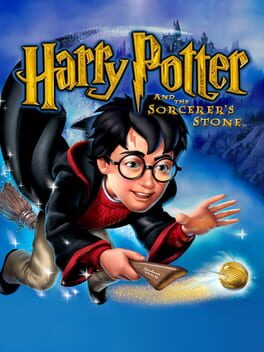subdirectory_arrow_right Harry Potter and the Sorcerer's Stone (Game), Harry Potter and the Sorcerer's Stone (Game), Harry Potter and the Sorcerer's Stone (Game)
▲
1
▼
Despite being developed by different studios, in all versions but the Game Boy Color version, during the final battle with Voldemort Spoiler:/Professor Quirrell, the player must use the Mirror of Erised in the middle of the room in order to strike and defeat him. This does not happen in either the book or movie version of the story. Spoiler:In those stories, Harry involuntarily "defeats" Lord Voldemort when the villain tries to touch him only for Lily Potter's protection spell that she put on Harry to disintegrate Quirrell and in turn Voldemort's physical vessel.
▲
1
▼
Midway through making the game, PC version developers KnowWonder had to do a hard reset and completely restart their development of the game after the lore restrictions employed by Rowling made their original game uninteresting and a "glorified walking simulator", as they put it. Specifically, much of the KnowWonder's ideas had to be abandoned or worked around because many of the spells they wanted to adapt to gameplay they couldn't because first year Hogwarts students didn't have access to such abilities.
Going back to the drawing board caused the redone game to be rushed and the developers to experience crunch, but despite this, they still "found their groove" that helped them create the final game. The team also greatly understood Rowling's strict demand as they were huge fans of the source material.
Rowling also helped KnowWonder by creating a new spell for the team which didn't appear in her novels or on-screen before: Flipendo, a movement spell. Developer Christo Vuchetich opines that Rowling knew what went into making a game by giving his team vague and simple descriptions for the list of first year spells (i.e. "Flipendo moves things").
Going back to the drawing board caused the redone game to be rushed and the developers to experience crunch, but despite this, they still "found their groove" that helped them create the final game. The team also greatly understood Rowling's strict demand as they were huge fans of the source material.
Rowling also helped KnowWonder by creating a new spell for the team which didn't appear in her novels or on-screen before: Flipendo, a movement spell. Developer Christo Vuchetich opines that Rowling knew what went into making a game by giving his team vague and simple descriptions for the list of first year spells (i.e. "Flipendo moves things").
▲
1
▼
Because the production of the first Harry Potter movie was top secret, KnowWonder's request for onset photos led to blurry photos coming back to them that were unusable. This caused them to send one of their devs named Phil to the set in order to write down everything the set designers did with all of the locations and the team then proceeded to base their environment work of their game solely off of Phil's writing and memory.
They also based the environments off of the heavy research they did on old and medieval British Architecture.
They also based the environments off of the heavy research they did on old and medieval British Architecture.
▲
1
▼
The Paintings on the walls of Hogwarts in the PC release are copies of famous portraits that have their heads replaced with the developers' heads to avoid copyright infringement.
subdirectory_arrow_right Harry Potter and the Sorcerer's Stone (Game), Harry Potter and the Sorcerer's Stone (Game), Harry Potter and the Sorcerer's Stone (Game)
▲
1
▼
The development teams of the different versions actually shared concept art between them during the planning stages of development. After that, the developers were on their own as they thought the different versions would appeal to different audiences. For instance, The PC devs designed their game to be more appealing toward children and pre-teens.
▲
1
▼
Because console games were more desirable at the time, the PC version's developers thought their game would only sell around 100,000 to 150,000 units, and were gobsmacked when the data came back from EA that the game sold a groundbreaking 1 to 2 million units.
Related Games
Harry Potter and the Sorcerer's Stone
Harry Potter and the Chamber of Secrets
Harry Potter and the Sorcerer's Stone
Harry Potter and the Chamber of Secrets
Harry Potter and the Prisoner of Azkaban
Harry Potter and the Goblet of Fire
Harry Potter and the Sorcerer's Stone
Harry Potter and the Sorcerer's Stone
LEGO Dimensions
Hogwarts Legacy
Harry Potter: Magic Awakened
Tony Hawk's Pro Skater 4
Sid Meier's Civilization III
Guitar Hero: Aerosmith
True Crime: New York City
SimCity 4
BioShock Infinite
Star Wars: Republic Commando
Command & Conquer: Generals
Tomb Raider: The Last Revelation
Borderlands: The Pre-Sequel
Star Trek: Elite Force II
Star Wars: The Force Unleashed II
Sid Meier's Civilization VI
The Sims
Star Wars: Knights of the Old Republic
Half-Life 2: Episode One
Spider-Man
Halo: Combat Evolved
Escape from Monkey Island
Sid Meier's Civilization IV
Tomb Raider I•II•III Remastered
Call of Duty: Black Ops
Call of Duty: Black Ops III
Lemony Snicket's A Series of Unfortunate Events
American McGee's Alice
Call of Duty
Star Wars: Knights of the Old Republic II - The Sith Lords
The Sims Bustin' Out
Duke Nukem Forever
Star Trek: Voyager - Elite Force
Rage
Tom Clancy's Splinter Cell
Shadow Warrior
Tony Hawk's Pro Skater 3
The Lord of the Rings: The Return of the King
Deus Ex
Stubbs the Zombie in Rebel Without a Pulse
Sid Meier's Alpha Centauri
Star Wars: The Force Unleashed
